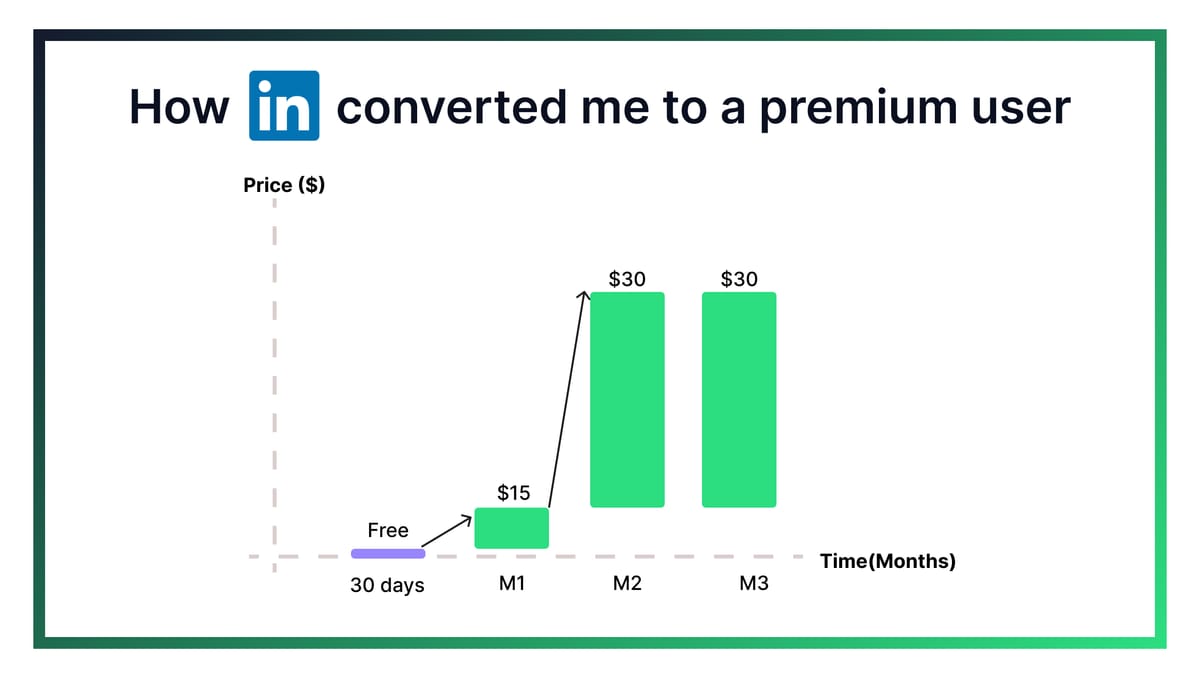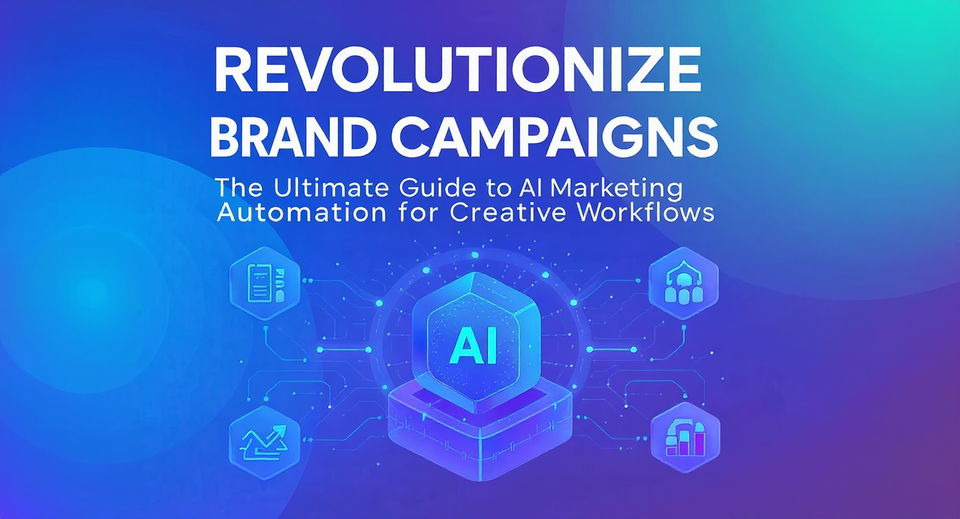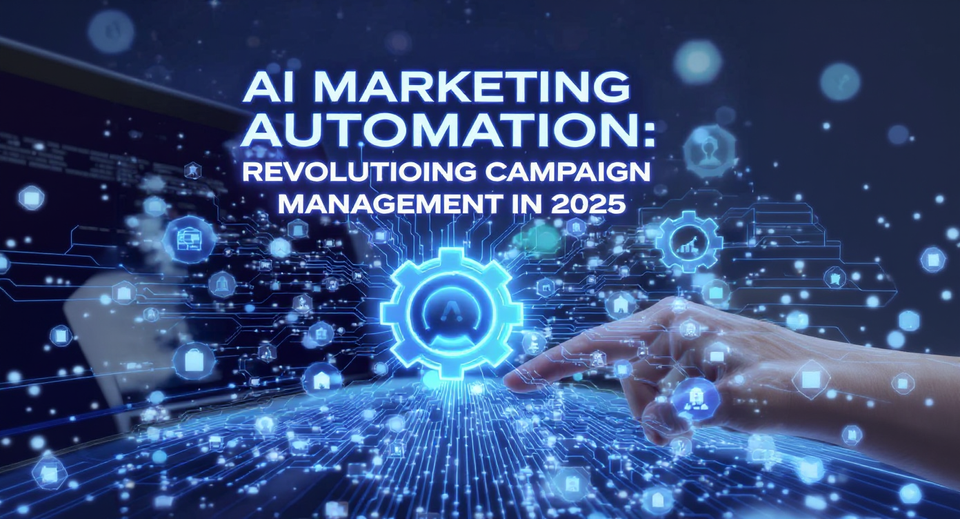Introductory Promotion: How LinkedIn Gradually Converts Users into Paying Customers

Have you ever been enticed by a product’s alluring free trial or a substantial discount? And then, almost magically, you find yourself committed for the long term. Sound familiar? You’re not alone! Many of us have fallen under the spell of offerings like Spotify, YouTube Premium, or LinkedIn Premium.
Initially drawn by what seemed like an unbeatable deal, we soon discover the premium features’ value. Willingly, we invest in the full experience, captivated by these introductory promotions.
But here’s the secret: These promotions aren’t just enticing; they’re strategic. They convert curious users into loyal customers and nudge freemium users across the monetization threshold.
Introductory offers
Introductory promotion entails setting low initial prices to draw customers to a new product and enhance brand awareness. This strategy aims to encourage customers to try the paid product, with the goal of retaining them when prices eventually rise to regular levels.
The image above illustrates how LinkedIn used a promotional strategy to help users understand the full value of the product, gradually converting them into paying customers who pays the full price.
Other examples of introductory promotion include Spotify, which offers a one-month free trial for its subscription service, and YouTube Premium, which provides a 90% discount for the first month.
Possible variations of introductory promotions
When it comes to introductory promotion for a recurring subscription, there are two main options:
1. Free trial
Offering a limited-time, no-cost opportunity for customers to try out product or service before committing to a purchase.
Popular B2C examples examples
- Spotify: Offers a 1-month free trial for Spotify Premium.
- Netflix: Occasionally offers a 30-day free trial for new users.
- Amazon Prime: Provides a 30-day free trial for Prime membership.
- Apple Music: Offers a 1-month free trial for new subscribers.
- Disney+: Occasionally provides a 7-day free trial.
- Hulu: Offers a 30-day free trial for its streaming service.
- Audible: Provides a 30-day free trial for its audiobook service.
- HBO Max: Occasionally offers a 7-day free trial for new users.
- LinkedIn Premium: Provides a 1-month free trial for its premium membership.
2. Limited period discount
For instance, offering a 25% discount for the first month and then subsequent renewal happens at the usual price.
Popular examples
- Hulu: Often provides discounted rates for the first few months of a subscription.
- YouTube Premium: Sometimes offers an introductory discount on the first few months of subscription.
- Apple Music: Occasionally offers discounts on the first few months for new subscribers.
- New York Times: Offers discounted rates for the first year of digital subscriptions.
- The Washington Post: Often has introductory offers for the first year of digital access.
- Evernote Premium: Sometimes offers discounts on the first year of subscription.
How to figure out which introductory promotion works best for my business?
While you can draw inspiration from similar products in the market, there is no one-size-fits-all approach. It's advisable to run experiments to determine what works best for your users and product.
Possible experiments include:
- Free trial length: Comparing a 3-day trial versus a 7-day trial.
- Limited period discount: Offering a 90% discount for the first month versus a 50% discount for the first month.
- Combination of free trial and limited period discount: Testing a 7-day trial plus a 25% discount versus just a 7-day trial.
Measuring success of introductory promotion experiments
The key to successful introductory pricing is retaining the newly-acquired customers. Thus, success depends on two factors:
- How many users you can convert (Conversion).
- How long users are retained once prices return to normal (Lifetime).
The success metric can be a combination of lifetime value(LTV) and conversion. Examples include LTV per account created and LTV per views.
The following images depict a real-life scenario from a dating app, where a $5 introductory offer results in a higher Lifetime Value (LTV) per account. However, initially, it lagged behind due to lower conversion rates compared to a $4 introductory offer.

Be patient
LTV depends on the renewal rate, which is distinct from engagement retention. The renewal rate measures how many cycles a user continues paying for the service, while retention indicates how long users use the product before discontinuing.
For recurring subscriptions, renewal and retention may not be strongly correlated. Therefore, it's crucial to measure the renewal rate for each price offering, and retention rate should not be assumed as a proxy for measuring renewals.
These tests might take a significant amount of time (months to quarters) to yield results with a high degree of confidence, as renewal data takes time to accumulate.
Common Mistake to Avoid
Insufficient communication or lack of clarity about the length of the promotional period can lead to customer dissatisfaction when prices inevitably rise. This may result in numerous negative reviews on the Play Store and App Store, affecting your app's ranking. Therefore, it is crucial to clearly inform users about the promotional details. Blinkist serves as an example of this issue(See below image).

Plugin :)
Check out SurgeGrowth to conduct introductory promotion testing without writing a single line of code, reducing go-to-market time from weeks to just a few minutes.



